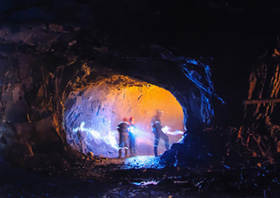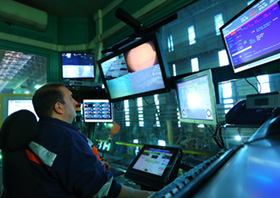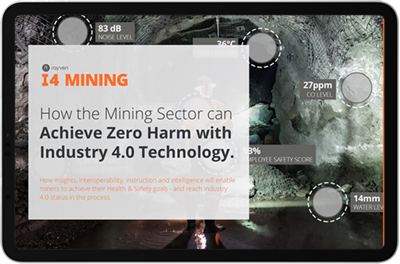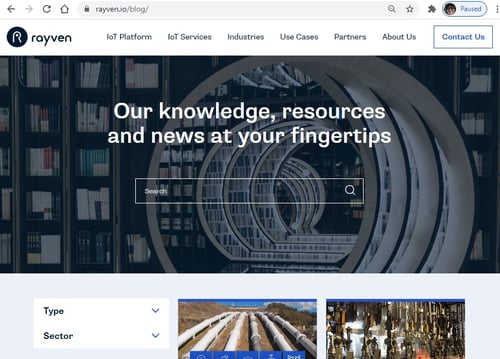Mining Safety: The industry must recognise it has a fatality cycle.
Blog
How do we progress from a 'Mining-Normal' Fatality Rate Cycle to Zero?
It will happen when corporate leadership adopts the attitude that mining should be safe, not dangerous, and acts to empower people with systemised operational critical controls that manage and identify patterns in the causal factors linked with significant hazards in real-time and enable intervention to prevent a tragedy from ever occurring.
For many, taking this position would represent a significant paradigm shift but this - and this alone - would break the current fatalistic cycle.
What's the challenge?
The challenge is best summed up by a quote from the primary reference for this article, Brady Heywood's Report Prepared for Department of Natural Resources, Mines and Energy, Queensland, Australia: “At a practical level, a large number of the fatalities involved a mine worker in a situation that they were inadequately trained for, with the controls meant to prevent harm being ineffective, unenforced or absent, with no or inadequate supervision to identify and remedy these shortfalls.”
The mining industry has improved its Normal Fatality Rate trend since the 1990’s through initiatives to eliminate multiple-fatality disasters. What has become clear, however, is that periods of annual increased vigilance have simply banked fatalities for future years - something that the Normal Fatality Rate trend indicates through the 2000’s - and if nothing changes, the order of fatalities magnitude cycle will likely continue to occur over any future 5 year period.
To drive the next step-change 'zero' initiative and the elimination of individual fatality disasters necessitates the mining sector to take an updated approach to worker safety because, if we continue using the same philosophy and methodologies as have been adopted in the past century, then similar safety outcomes should (and can only) be expected.
What should (and shouldn't) this new approach involve?
There is no single cure, however a new approach which augments worker inductions, training and experience with the use of currently available technology to provide real-time virtual supervision of people performing hazardous roles and/or tasks - particularly those associated with vehicles, machinery and heights - would make a dramatic impact.
What I'm talking about here is action - not another consultation that generates another costly report with very little to show in terms of change or help on what to actually do to deliver the systemic change necessary reach zero.
It is perfectly possible (and increasingly simple) to put in place a connected-worker guidance system that provides augmented advice to people performing (any) task in dynamic environments to prevent an incident from occurring by identifying when a previous (or similar) pattern of identified causal hazardous factors associated with a dangerous situation is occurring again and intervenes (using human or AI-led intervention) to prevent the continuation of the fatalistic cycle.
Fundamentally, it's this mind-shift, from learning from past mistakes to putting in place measures to prevent them occurring in the first place, that needs to occur - and if that sounds far off, complex or expensive; you'd be wrong.
We have only recently been working on deploying a solution using the I4 Mining Dynamix platform that utilises real-time measurements of individuals, plant and the process being performed to objectively analyse whether the task is being undertaken safely within the designed controls parameters, and then providing guidance and intervention when necessary.
This Industrial 4.0 Mining system is configured for initial commissioning before being actively iterated via hierarchical self-serve operational teams to deliver continuous business improvement and scale, simply; and it represent a tangible, unencumbered path to zero that has more than just the chance of success.
I4 Mining is a sustainability technology provider to the mining sector, offering ready-to-deploy ESG solutions that help miners to succeed both strategically and operationally without ever getting in the way of good business.
Our solutions enable you to easily develop strategies, deliver accurate sustainability metrics and reports in real-time, improve sustainability and business performance, as well as make predictive analytics and forecasts part of your everyday so that you can reduce risks and optimise from mine-to-market.
Speak to us today to book a demo and discover how you can get started on your digital sustainability journey.
You might also be interested in:
References:
- Brady Heywood Report Prepared for Department of Natural Resources, Mines and Energy, Queensland, Australia: Review of all fatal accidents in Queensland mines and quarries from 2000 to 2019 - Brady Heywood Report.pdf
- 2019-20-qld-mines-and-quarries-safety-performance-and-health-report.pdf
- Mine-safety-performance-report-2020-2021_0.pdf
- Safety performance in the Western Australian mineral industry 2020-21 - report.pdf

Phillip McBride
CSO & Technologist @ Rayven
phillip@rayven.io
LinkedIn
Want to know about industrial AI + IoT more broadly?
If you'd like to find out more about the technology that underpins all of our digital mining solutions, other industrial uses of AI + IoT, or are eager to get into the detail of precisely what AI and IoT technology are then visit the Rayven blog.




